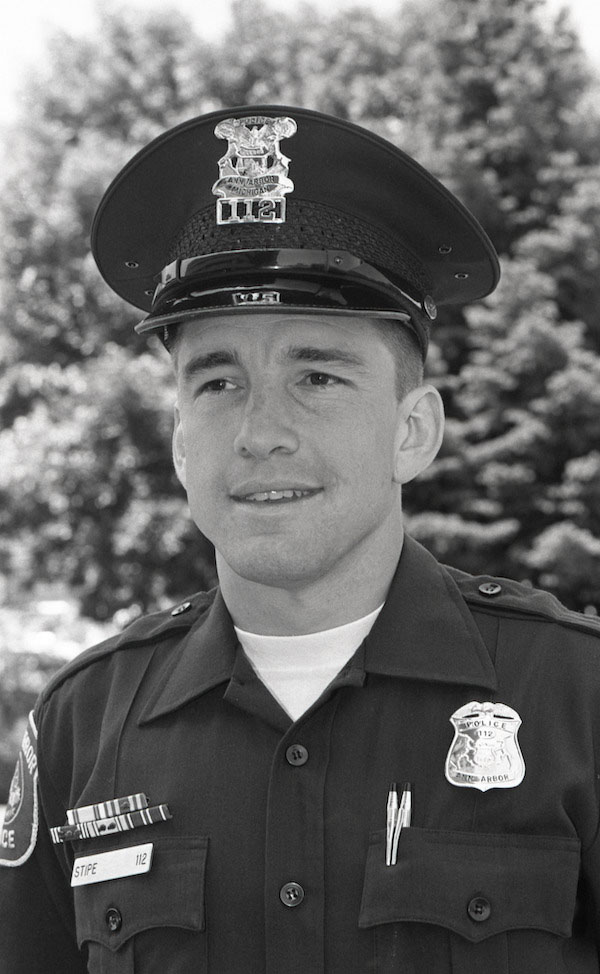
AADL Talks To: Peter Yates

Peter is a professional photographer who started as a street photographer in New York and went on to work for national magazines and newspapers shortly after moving to Ann Arbor in 1969.
Peter reminisces about some of his memorable photography assignments; the restaurants and music venues he misses; the friends and colleagues who helped him; and his time working in Ann Arbor -- at Mark's Coffeehouse, the Blind Pig, and the Ann Arbor Observer.

AADL Talks To: Grace Shackman

Grace Shackman is an author, educator, and former Washtenaw County Commissioner. But she's probably best known as a local historian and a long-time contributor to the Ann Arbor Observer, where she has dug into many fascinating topics of local and regional history. Grace tells us about how she became involved in politics, her research process, and how her interests spurred her beyond her shy nature.
Find more by and about Grace Shackman in our archival collections.

AADL Talks To: Peter Andrews

In this wide-ranging interview from 2010, Peter Andrews recalls his varied career producing and managing local and regional music talent — from managing the Scot Richard Case (SRC) band and bringing bands like The Who, Jimi Hendrix, and the Yardbirds to Ann Arbor’s Fifth Dimension club, to booking national acts for University of Michigan student groups. He also discusses his role in Ann Arbor’s legendary Blues and Jazz Festivals, producing the John Sinclair Freedom Rally at Crisler Arena in 1971, and bringing John Lennon and Yoko Ono to town.

AADL Talks To: Steve Adams
Steve Adams was born, raised -- and still lives -- in Ann Arbor, and he can trace his family's local roots back to the Civil War. In this episode, Steve recalls growing up in the historic Black neighborhood near Mack Elementary School, and a progressive teacher at that time, Allene Green, whom he credits with having a major influence on his life. Steve recounts his connection to several iconic Ann Arbor institutions: Pioneer High School during the school's division into Ann Arbor's second high school, Huron High; the Del Rio restaurant and other local music clubs and venues; the Ann Arbor Blues and Jazz Festivals; and, in particular, Border's Book Shop, where he worked for 32 years, from 1974-2006.

AADL Talks To: Peter Stipe

Author and former Ann Arbor policeman Peter Stipe recounts his journey from being a wayward youth growing up in countercultural Ann Arbor to becoming the most decorated member of the Ann Arbor Police Department. Peter shares memories of his time with the AAPD, including harrowing encounters on emergency calls and the many people and events that helped shape his career. Peter also shares his love of local history and discusses the changes he's seen in the city over the years.
Peter's story is detailed in his 2021 memoir, Badge 112.
You can read and view historical photos about Peter Stipe and the Ann Arbor Police Department, or read other histories of the Ann Arbor Police Department.

There Went The Neighborhood: The Closing of Jones School
As part of Ann Arbor 200, the Ann Arbor District Library and 7 Cylinders Studio (7CS) have produced a documentary film about the closing of Ann Arbor's Jones School. In 1965, the Board of Education closed the majority-Black school. Ann Arbor joined a nationwide trend of school desegregation during the Civil Rights Era. But for these young students, the loss of a neighborhood school foreshadowed changes to their close-knit community. Gentrification came to Ann Arbor on the heels of desegregation.
In the making of this film, 7CS filmmakers and AADL archivists interviewed over thirty former Jones students and Black community leaders. They shared memories of Jones School and "The Old Neighborhood"—the areas now known as Kerrytown and Water Hill. A filmed walking tour, studio interviews, and historical photos form the core of the film. Run time is approximately 40 minutes.
The AADL Archives has many additional materials to explore relating to these topics, including a history of Jones School and dozens of Ann Arbor News articles that appear in the film:

AADL Talks To: Karen Jania
In this episode, Karen Jania, president of the Washtenaw County Historical Society (WCHS), discusses her career in archives and museums. In addition to discussing her work at the WCHS, Karen talks about her long career as head of reference at the Bentley Historical Library, including the many changes in archives work that she witnessed during her tenure, the colleagues who nurtured her through her career, and some of the Bentley's unique collections.
More information in AADL's collection on the Bentley Historical Library and the Washtenaw County Historical Society.

AADL Talks To: Dave and Linda Siglin

In this episode, Dave and Linda Siglin talk about the history of Ann Arbor's beloved folk venue, The Ark, from its humble origins in a house on Hill Street to its thriving location at 316 S. Main Street. Dave and Linda reminisce about some of the famous national and regional talent that has played the venue; the evolution of the business; changes within the folk music industry; and the Ark's signature fundraising event, the Ann Arbor Folk Festival.
Read historical articles about The Ark and the Siglins and the Ann Arbor Folk Festival.

AADL Talks To: Jerry DeGrieck
 In this episode, AADL Talks To Jerry DeGrieck. Jerry was the first elected official to come out as gay in the U.S. alongside council member Nancy Wechsler in 1973. Both were members of the Human Rights Party, and in 1972 beat out local democrats and republicans for two seats on Ann Arbor’s City Council. Jerry recalls his time in Ann Arbor and discusses influential moments in his life politically and personally. Though Jerry moved to Seattle in 1974, he still remembers his time in Ann Arbor fondly, has visited several times over the years, and has maintained lifelong friendships that began here.
In this episode, AADL Talks To Jerry DeGrieck. Jerry was the first elected official to come out as gay in the U.S. alongside council member Nancy Wechsler in 1973. Both were members of the Human Rights Party, and in 1972 beat out local democrats and republicans for two seats on Ann Arbor’s City Council. Jerry recalls his time in Ann Arbor and discusses influential moments in his life politically and personally. Though Jerry moved to Seattle in 1974, he still remembers his time in Ann Arbor fondly, has visited several times over the years, and has maintained lifelong friendships that began here.

AADL Talks To: The Chenille Sisters
In this episode, AADL Talks To The Chenille Sisters, Ann Arbor's favorite harmonizing trio. They are (left to right, below) Cheryl Dawdy, Grace Morand, and Connie Huber. The Chenille Sisters began singing together at Ann Arbor's Old Town Tavern in 1985. Within a year, they made their first of several appearances on Garrison Keillor’s popular “A Prairie Home Companion” radio program. The trio wrote and toured constantly through the early 2000s, appeared in numerous regional and national venues, and recorded 12 records.
Visit our Chenille Sisters topic portal for more information, documents, and photos covering their history.
